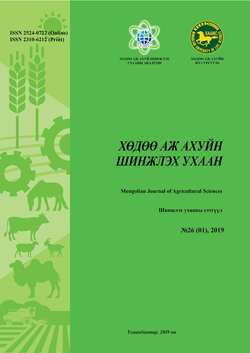Mongolian crude propolis content analysis and antioxidant activity
DOI:
https://doi.org/10.5564/mjas.v27i02.1283Keywords:
Mongolian propolis, bee glue, chemical constituentAbstract
Propolis, a precious bee product has been widely used for pharmaceutical purposes for centuries. Chemical components, properties, and activities are differed based on geographic origins, respective plant sources, and bee species. In our research, Mongolian propolis from 2 different places was examined for chemical content and antioxidant effect. The samples were collected from Northern and Central parts of Mongolia and were examined for a total of 8 contents. Crude Mongolian propolis sample from central part of Mongolia displayed higher results in every aspect with total moisture of 2.1%; ash 1.7%; fat 67.8, 69.3%; and 1.05% of protein. The free amino acid in 70% EtOH was higher in sample from northern part with 1.21µg/mg and the total amino acid was quantified by HPLC and highest concentration detected in methionine 1.90mg/g, and 2.62 mg/g. Totally 3 alkaloids and 2 phenolic were detected by TLC and high antioxidant activity was presented in DPPH radical scavenging test. The results suggest that the best solvent for propolis samples is EtOH 70% solution. The test propolis samples contain different types of alkaloids and phenolic, have high amount of methionine and has high antioxidant effect.
Downloads
604
Downloads
Published
How to Cite
Issue
Section
License
Copyright on any research article in the Mongolian Journal of Agricultural Sciences is retained by the author(s).
The authors grant the Mongolian Journal of Agricultural Sciences a license to publish the article and identify itself as the original publisher.

Articles in the Mongolian Journal of Agricultural Sciences are Open Access articles published under a Creative Commons Attribution 4.0 International License CC BY.
This license permits use, distribution and reproduction in any medium, provided the original work is properly cited.




